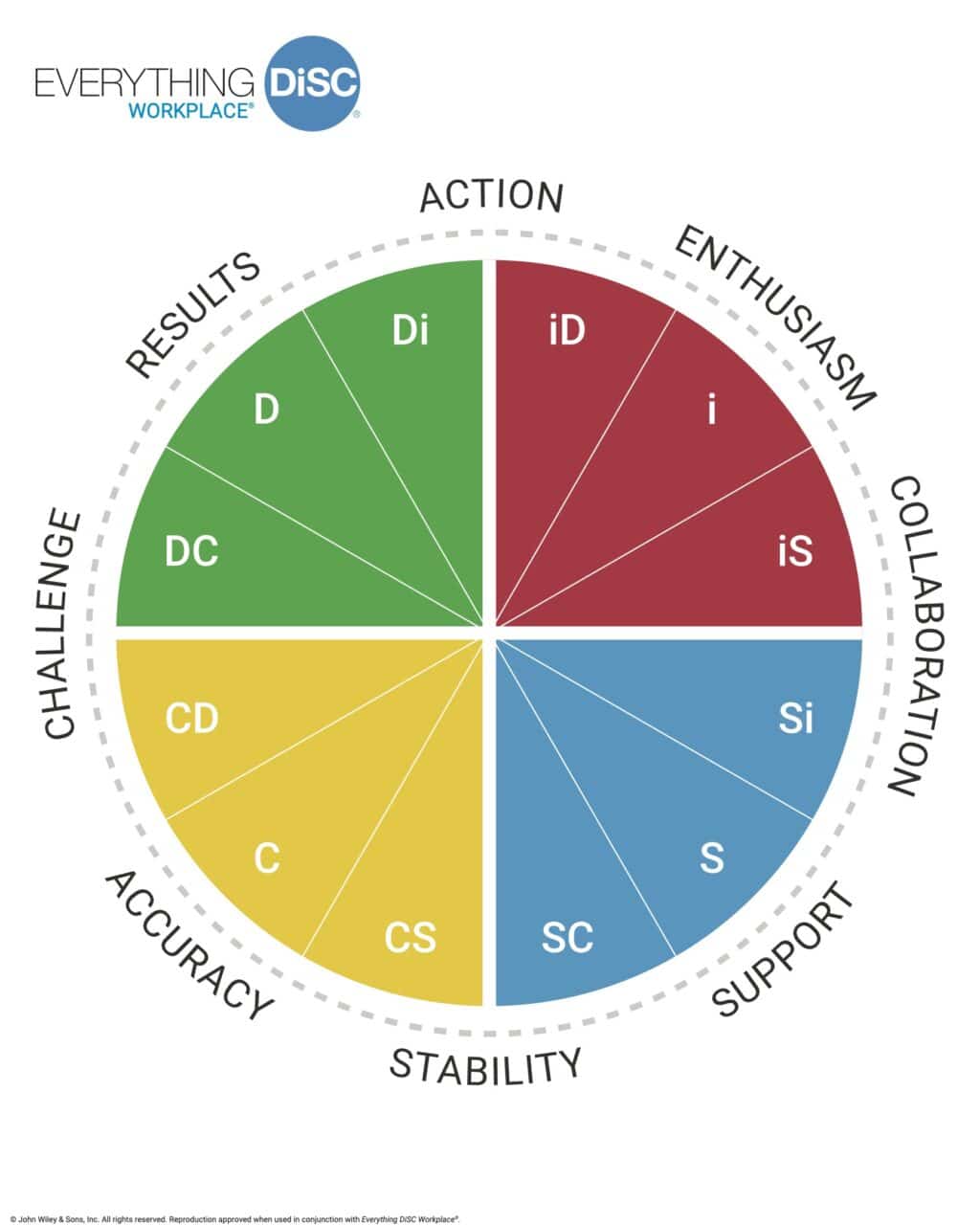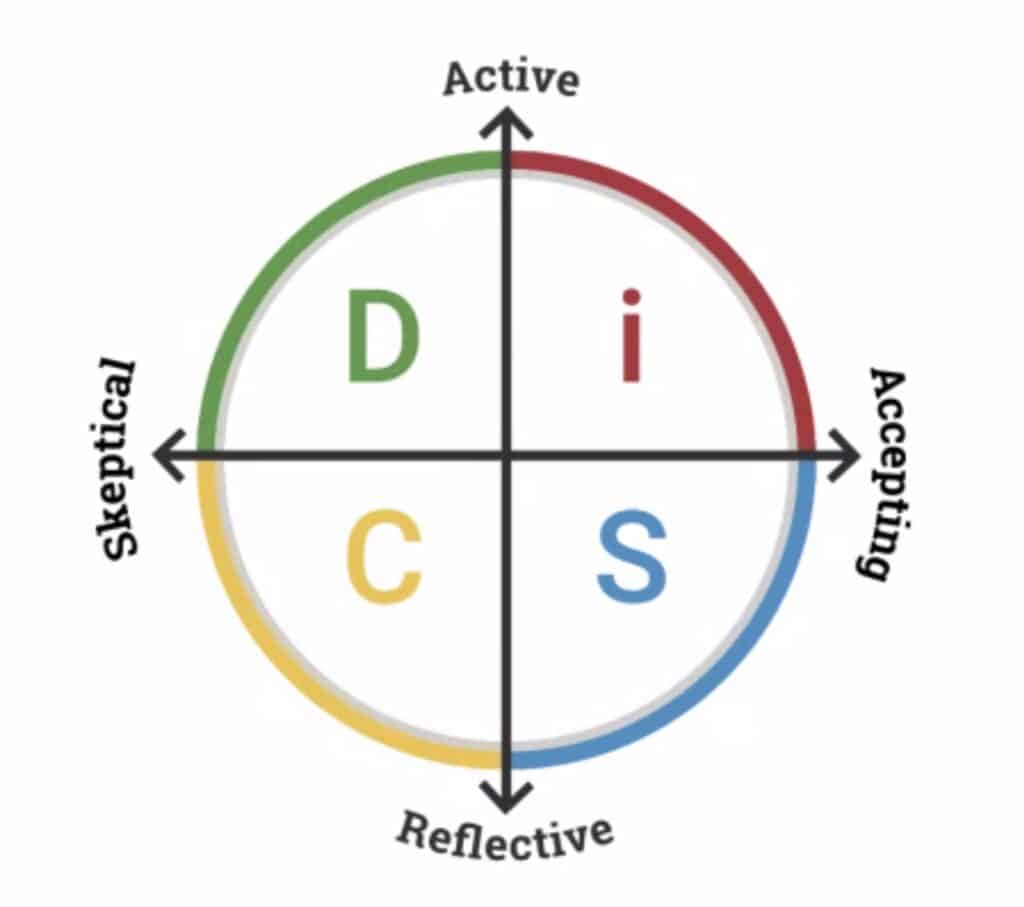Chances are, you’ve probably taken a personality assessment before. Between social media quizzes and full-blown tests, personality assessments can be quite a helpful tool for better understanding ourselves. After all, it’s in our nature to want to learn more about the things that make us who we are!
With over 1 million assessments completed each year, Everything DiSC is one fantastic personality measure that allows you to do just that – learn more about yourself and those around you. With over 40 years of research-backed guidance, the DiSC assessment focuses on the behaviors that we, as humans, exhibit in our day-to-day lives.
So, whether you’re a seasoned DiSC enthusiast or a curious newbie, we sat down with the experts to bring you a comprehensive guide to all things DiSC in the workplace.
Continue reading as Celarity’s Fractional Chief People Officer and DiSC Authorized Partner, Dina Simon, and Senior Recruiter, Ashlee Walstad, combine their 25+ years of DiSC expertise to walk through the basics, outline each trait, and share strategies for DiSC collaboration. Let’s dive into it!
An Overview of the Basics of DiSC
First things first – we need to cover basics! At its core, the DiSC model is a simple yet effective tool that provides custom insights based on 4 personality traits: Dominance, Influence, Steadiness, and Conscientiousness.
Each trait boasts a series of hallmarks, or unique ways of doing things, that we commonly display as people. The traits serve as a self-awareness resource for leaders, individual contributors, and teams, allowing us to better understand our strengths and potential blind spots. It’s pretty great, right?!
As you may notice below, each DiSC type holds a unique spot on the DiSC model, which serves as a tool to visualize the similarities, differences, and hallmarks of each trait.

A Note on the Cusp
The insights don’t stop at each clear-cut trait. As you work through DiSC, you may also notice yourself exhibiting behaviors of more than one DiSC trait (this is completely normal!). Simply put, this means that you may actually land on the cusp of two traits and have a greater range of knowledge to base your DiSC findings on.
Within the model above, the Di, iS, and Si sections are examples of where a cusp measure may land. Essentially, they place you in between 2 of the core quadrants.
A Closer Look Into the Superpowers of Each Trait
We’ve set the stage on the basics – now, let’s dive into the fun! We’re going through each DiSC trait one by one to break down its most common strengths, leadership tendencies, and superpowers. Take a look!
Dominance (D)
Noted to be The Driver, those with a Dominant Style are highly coveted for their ability to see the bigger picture and voice their opinions in a direct manner. D styles typically place a priority on taking action, seeing results, and making strides to see success.
The D style is renowned for being active, fast-paced, straightforward, and outspoken.
In leadership, the D style tends to show up as a commander. They keep their focus on the outcome and pioneer strategies to ensure that the bottom line is achieved.
Fun fact: The Dominance Style is the rarest of the DiSC model, with only 9% of the population making up the D category!
Influence (i)
Those displaying an Influence Style are commonly viewed as The Enthusiast. They contribute to their community by bringing an optimistic outlook and persuading others through strong relationships.
The i Style is appreciated for being outgoing, enthusiastic, lively, and trusting.
As leaders, those with i Styles energize their teams and hit the ground running with new ideas. They keep their focus on enthusiasm surrounding projects, helping all feel excited about the tasks at hand.
Steadiness (S)
Individuals boasting the Steadiness Style are noted to be just that – The Steady Peacekeeper. They find their joy by working with others in a sincere, dependable way.
The S style is known for being accommodating, patient, helpful, stable, and secure.
When leading others, the S style can be counted on for collaboration, providing an inclusive and affirming space for all. S leaders strive to reach win-win situations.
Conscientiousness (C)
Last but certainly not least, those with the Conscientiousness Style tend to be viewed as The Analyst. They are commonly fueled by quality and accuracy, displaying expertise and objectivity in all aspects of life.
The C style is noted to be analytical, reserved, precise, and stable.
In terms of leadership, the C style is dependable, disciplined, and careful. They take extra steps to ensure projects are thoughtfully planned and executed.
Determining Your DiSC Profile in 3 Simple Steps
Just like that, the basics are ready-to-roll. Now, you may be wondering: How do I determine what my own DiSC type would look like?
The most effective way is to complete a full DiSC assessment with an Authorized Partner, like Dina. However, there are also a few steps you can take to determine your general DiSC profile on your own. Let’s walk through them together by looking at pace and priorities. ⬇️

Step 1: Discover your Approach to Pace and Tempo
To begin determining your own DiSC hallmarks, first, ask yourself: What kind of pace do you typically exhibit when completing a project? Do you feel most comfortable at a fast, active pace? Or, do you find yourself to be more reflective, working at a moderate or cautious pace?
- If you feel as though you move through projects at a fast, active pace, your tendencies may lean more towards the D and i profiles.
- If you prefer to reflect on projects as you complete them, your tendencies may lean more towards the S and C profiles.
Step 2: Evaluate your Project Priorities
Now, dive into your project priorities. Consider the following: When completing a task, do you find yourself to be more skeptical and logic-focused, or do you place priority on people and feelings?
- If you typically foster a skeptical, logical outlook, your tendencies may lean more towards the D and C profiles.
- If you find yourself prioritizing acceptance of situations, people and feelings, your tendencies may lean more towards the i and S profiles.
Step 3: Put Your Results Together!
The final step to determine your DiSC style is to put your results from Steps 1 and 2 together! Using the following guidelines, you’ll be ready to take a closer look at your personal DiSC profile in no time.
- If you are fast-paced and skeptical, you exhibit D traits.
- If you are fast-paced and prioritize acceptance, you exhibit i traits.
- If you are reflective and prioritize acceptance, you exhibit S traits.
- If you are reflective and skeptical, you exhibit C traits.
Now, you’re ready to put your DiSC skills on display in the workplace!
Applying DiSC At Work
Once you know your DiSC type, you can begin to uncover the beauty of DiSC in action. As a tool to better understand yourself, your team, and the people around you, the applications of DiSC in the workplace are endless!
Let’s dive into 3 ways that DiSC is prevalent at work.
- Team Balance: DiSC insights can help leaders balance their teams by incorporating the superpowers of each DiSC trait into their workforce through hiring and optimization.
- Diverse Partnership: By working together with those who have opposing DiSC personality measures, coworkers and teams can work to understand differing perspectives and maximize output.
- Employee support: Team DiSC assessments can show both leaders and employees the various ways that others are most likely to show up in the workplace, helping to curate effective strategies for team direction, support, and communication.
As you can see, the uses of DiSC in the workplace can come to fruition in many different ways – whether it be a leader using DiSC to better understand their team, an individual contributor tapping into DiSC to improve their performance, or some spot in between.
Dynamic Duos and Collaboration
We’ve covered the basics, outlined the applications, and spotlighted the various ways that DiSC can show up in the workplace; Now, let’s bring the traits together and paint the picture of DiSC collaboration in the workplace.
With each DiSC trait featuring its own strengths and superpowers, DiSC duos are dynamic partnerships at their core. Here are a few of the rapid-fire and highly-coveted collaboration perks of pairing differing DiSC profiles in the workplace.
- Dominant and Influence Styles: High-Energy Partnership
- Dominant and Steadiness Styles: Balanced and Resillient Team
- Conscientiousness and Dominant Styles: Speed Balanced With Precision
- Influence and Steadiness Styles: Innovative and Harmonious
- Influence and Conscientiousness Styles: Well-Balanced Decision-Makers
- Steadiness and Conscientiousness Styles: Dependable, Detail-Oriented Team
Partnering with the various DiSC traits can have immense positive benefits depending on your project need. And, it can help you learn from a diverse perspective – creating a true win-win!
For More On DiSC
At the end of the day, your DiSC profile is just that – a profile. While it’s not the end all, be all for personality and effectiveness in the workplace, it is a great place to gain insight into your own strengths and opportunities for growth.
As you work through DiSC and implement it in your own workplace, we’d love to help you make the most of all that it has to offer! Be sure to join us this fall for our highly-anticipated Leadership Development Series: Creating Happy Careers Begins with Successful Leaders, where we’ll be breaking down DiSC and leadership.
In the meantime, stop by our LinkedIn Live to hear Dina and Ashlee personally speak to their DiSC profiles, using it in the workplace and optimizing diversity through personality.

